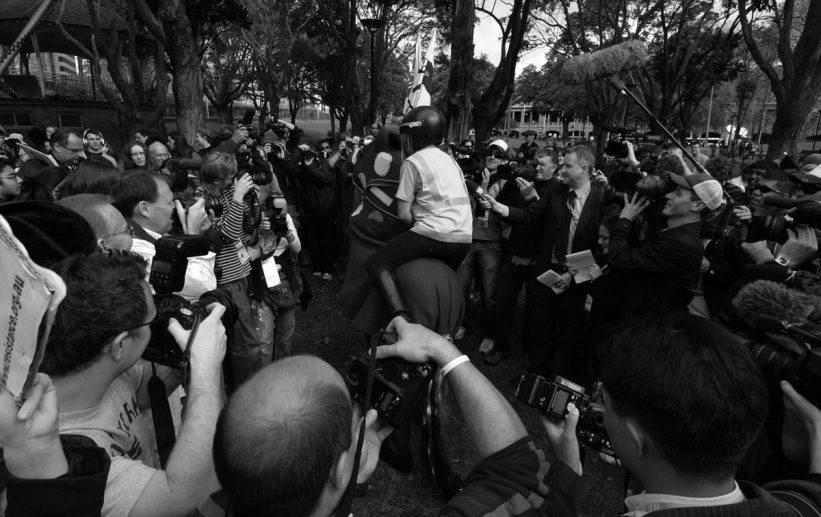Politicians are probably the most scrutinized of all occupations. Take Tony Abbott, we see his face everyday in the news, sometimes in a positive light, but usually not. He has to face the media on a regular basis to defend his actions, having to think before he speaks, which sometimes he clearly forgets. Remember when he was forced to defend his comment that “sometimes s*** happens” when discussing the events surrounding the death of a digger in Afghanistan?
He accused Channel 7 of “trying to turn this into a subsequent media circus”, but when asked how that was occurring and why his comments had been taken out of context, he refused to answer for more than 20 seconds. What a strange response? It makes me wonder if he had had any media advice beforehand or if this one had actually stumped him.
Media training is not only essential for politicians, but for any spokesperson or leader of an organisation. In a world where people are quick to judge and will often revel in anothers’ downfall, it’s important to be prepared to positively represent your own and your companies reputation. It maybe a daunting experience – will you still be confident when faced with a TV camera or radio microphone? How will you respond to a tough question or hostile reporter?
We’ve come up with some tips on how to control a media interview and steer it into a positive opportunity for yourself and your business…
1. Preparation:
You may live and breathe your industry but you can never over-prepare. Just because you have all the answers, doesn’t mean you know how to deliver them, particularly when you are faced with a large audience, TV camera or pushy reporter. Invest time into rehearsing and anticipate potentially tough questions. The reporter/journalist is probably not trying to actually trick you, but they need a story. If they sense you are being dishonest or skirting the issue, that’s when they’ll dig deeper and try to find out what you are hiding. If on the other hand you confidently deliver some informative, engaging content, they will no doubt be satisfied and run with the story.
2. Format key messages:
Come up with 3 positive key messages about your business that you want the public to know about. This may be a story for the journalist, but it’s also a great opportunity to create some great PR for yourself and your company. If it is pre-recorded, obviously it may not be used, but a live interview is a great opportunity, use it!
3. Practice how to bridge:
When faced with a difficult question, do not skirt around the issue like so many politicians are renowned for. Instead, acknowledge the question then transition into an area that you want to talk about, i.e. one of your key messages. This is a clever way of turning a potentially negative situation into a positive outcome and shows that you are in control of the interview.
If you don’t know an answer, say so, don’t try and wing it or you will look shifty and raise suspicion. Instead, say that you can look into this further for them or direct them to an expert in the field. This shows that you are honest and not afraid of not knowing all of the answers. If the interview is pre-recorded, take advantage if you need to. You can always ask to stop, take a breather, or ask for the question to be asked in a different way.
4. Keep it simple:
Keep your answers short and concise. The journalist may lose interest before you get to your key message therefore you are missing an opportunity. Keep your answers focused and deliver them passionately and confidently.
5. Know your audience:
You are not trying to satisfy the journalist, you are trying to satisfy the audience they are representing. Make sure you know who the audience are and what they will be expecting.
6. Be mindful of your body language:
We want to be able to trust you. Looking nervous and lacking in confidence will make the audience lack confidence in what you are saying. Relax, keep a clear head and focus on those key messages.
Media training shouldn’t be daunting, it’s actually good fun! For the past fifteen years we’ve been showing individuals how in getting the right message delivered with the right tone, the results can be remarkable. Once you know what you’re trying to achieve and how that fits in with the way the media operates, you’ll never look back.
Lucy Helliwell











